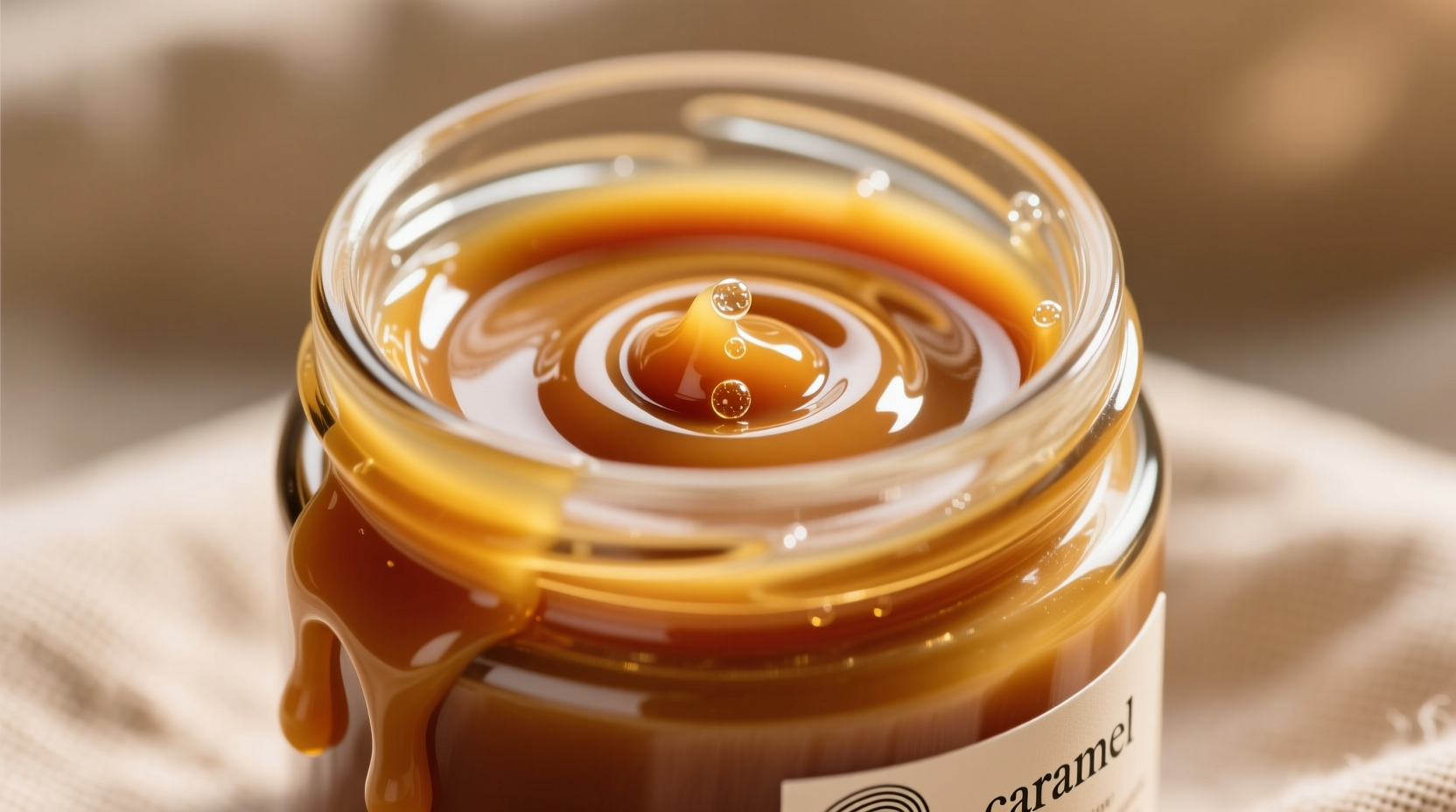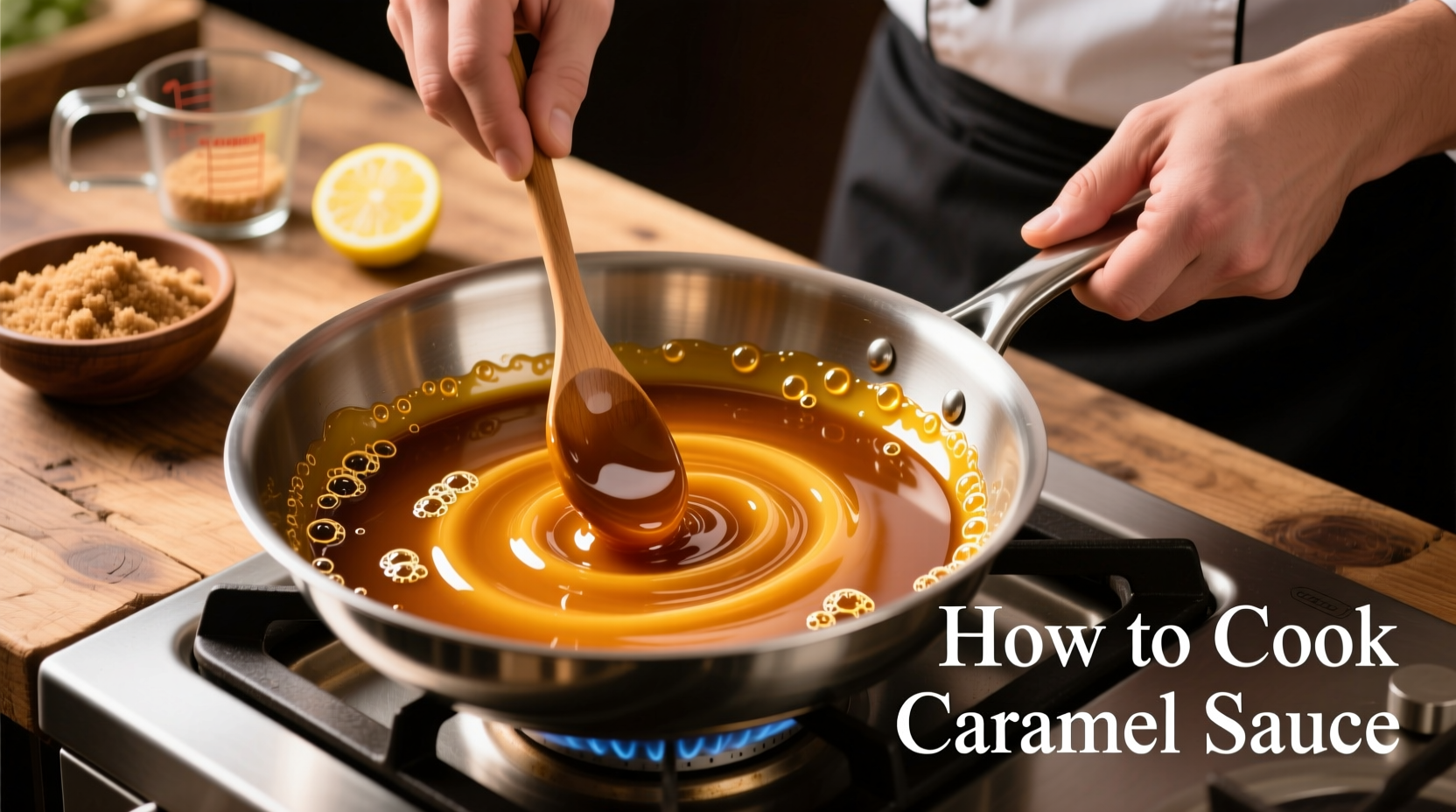Why Homemade Caramel Sauce Beats Store-Bought
Commercial caramel sauces often contain corn syrup, preservatives, and artificial flavors that dull the pure sweetness of caramelized sugar. When you cook caramel sauce from scratch, you control the ingredients and achieve a deeper, more complex flavor profile. According to the Culinary Institute of America, properly made caramel develops over 500 flavor compounds through the Maillard reaction and caramelization—far more nuanced than mass-produced alternatives.
| Caramel Stage | Temperature Range | Visual Cues | Best For |
|---|---|---|---|
| Thread | 215-230°F | Thin threads form | Syrups |
| Soft Ball | 235-240°F | Forms soft ball in water | Fudge |
| Hard Ball | 250-265°F | Forms hard ball in water | Caramels |
| Soft Crack | 270-290°F | Cracks when cooled | Brittle |
| Hard Crack | 300-310°F | Hard, brittle strands | Lollipops |
| Caramel | 320-350°F | Deep amber color | Sauces, desserts |
Essential Equipment Checklist
Before you start cooking caramel sauce, gather these tools:
- Heavy-bottomed saucepan (light-colored interior helps monitor color)
- Wooden spoon or heatproof spatula
- Measuring cups and spoons
- Oven mitts (the pan gets extremely hot)
- Heatproof container for finished sauce
Avoid using reactive pans like aluminum or copper, which can cause crystallization. The USDA Food Safety and Inspection Service recommends keeping a bowl of ice water nearby when working with hot sugar in case of burns.
Ingredient Science: Why Each Component Matters
The magic of caramel sauce happens through precise chemistry. Here's why each ingredient plays a critical role:
- Granulated sugar: Pure sucrose provides consistent caramelization. Avoid powdered sugar (contains cornstarch) or brown sugar (molasses interferes with clarity).
- Water: Helps dissolve sugar crystals evenly. The American Scientist explains that water prevents premature crystallization by allowing sugar molecules to move freely before heating.
- Unsalted butter: Adds richness and prevents recrystallization. Salted butter varies in salt content, making precise seasoning difficult.
- Heavy cream: Contains fat and proteins that create emulsion and mellow the intense sweetness.

Step-by-Step Caramel Sauce Method
Preparation Phase
Mise en place is critical when you cook caramel sauce. Measure all ingredients before starting—once sugar heats, you won't have time to measure. Have your butter cubed and cream warmed to room temperature to prevent temperature shock.
Sugar Dissolution
- Combine 1 cup sugar and ¼ cup water in saucepan
- Stir gently until sugar resembles wet sand
- Cover and heat on medium until sugar dissolves (about 5 minutes)
- Uncover and continue cooking without stirring
Caramelization Process
Watch closely as the mixture transforms:
- Bubbles will form and liquid turns clear
- Color progresses from pale yellow to golden amber (10-15 minutes)
- Swirl pan gently for even coloring—never stir at this stage
- Remove from heat just before desired color (it continues cooking off-heat)
Liquid Addition & Finishing
Warning: Hot sugar causes severe burns. Proceed with caution.
- Slowly whisk in 4 tablespoons butter (mixture will bubble violently)
- Gradually add ½ cup warm cream while whisking
- Return to low heat for 1 minute to thicken
- Remove from heat and stir in 1 tsp vanilla extract
- Cool slightly before transferring to storage container
Troubleshooting Common Caramel Sauce Problems
Even experienced cooks encounter issues when making caramel sauce. Here's how to fix them:
Crystallization Prevention
If sugar crystals form during cooking:
- Add a small amount of lemon juice or cream of tartar (¼ tsp per cup sugar)
- Ensure all sugar dissolves before uncovering
- Avoid stirring once sugar begins caramelizing
Burnt Flavor Recovery
If your caramel sauce tastes bitter:
- Start over—burnt sugar cannot be salvaged
- Use medium-low heat instead of high
- Remove from heat just before reaching desired color
Creative Variations & Storage Tips
Once you've mastered the basic how to cook caramel sauce technique, try these professional variations:
- Salted caramel: Add ½ tsp flaky sea salt with the cream
- Coffee caramel: Replace 2 tbsp water with strong brewed coffee
- Spiced caramel: Infuse cream with cinnamon stick before adding
Store cooled caramel sauce in an airtight container in the refrigerator for up to 2 weeks. Reheat gently with a splash of cream to restore smooth texture. For longer storage, freeze in ice cube trays then transfer to freezer bags for up to 3 months.
Perfect Pairings for Your Caramel Sauce
Use your homemade caramel sauce in these delicious ways:
- Drizzle over vanilla ice cream or cheesecake
- Swirl into coffee or hot chocolate
- Fill macarons or sandwich between cookies
- Glaze for apples or roasted vegetables
- Base for caramel popcorn or candy apples











 浙公网安备
33010002000092号
浙公网安备
33010002000092号 浙B2-20120091-4
浙B2-20120091-4